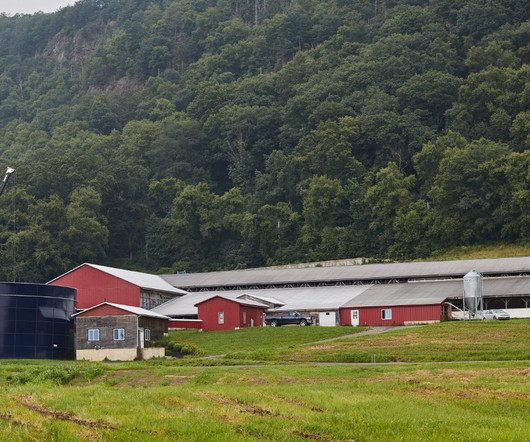These Manure Digesters Incorporate Food Scraps. Does That Make Them Better?
Civil Eats
AUGUST 28, 2023
Methane gas digesters are used by dairy farms to convert manure into energy and reduce their greenhouse gas (GHG) emissions. The fertilizer produced by the co-digester is stored in the tank behind it. By benefiting socially, Davis means odor control: co-digesters produce an odorless organic fertilizer. Photo by Meg Wilcox.












Let's personalize your content